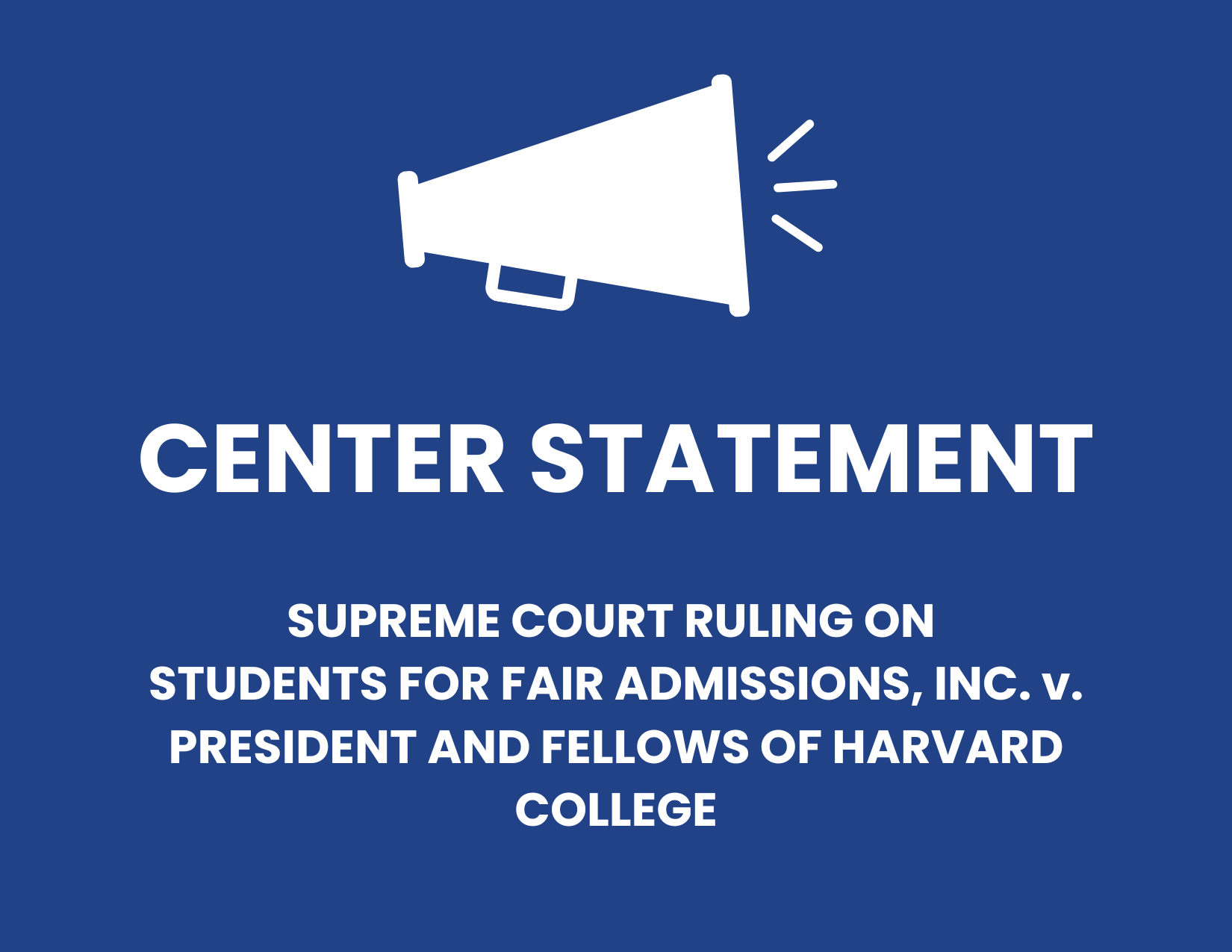As a center focused on the study of HIV, it is imperative to detail the implications for our research field of the recent Supreme Court ruling that race can no longer be used as a factor in college admissions in the U.S.
Precedent in the case of Grutter vs. Bollinger determined that diversity was a compelling interest for educational institutions, one that would allow consideration of race in holistic admissions processes. Overturning that decision has the potential to affect U.S. efforts to end the HIV epidemic at multiple levels. Like many health conditions, large differences in HIV outcomes occur along lines of race and ethnicity. When it comes to new HIV cases in the U.S., the disparities are staggering. For example, according to the latest data, rates of new cases among American Indian/Alaska Native, Black/African, and Hispanic/Latiné people are 1.8, 4.2, and 8.5 times that of White people, respectively. Lower levels of viral suppression and HIV care engagement and higher rates of HIV morbidity and mortality are also observed in these groups compared to White populations. Inequities in education and other markers of socioeconomic status are among the root causes that help to account for increased burden of disease in many minoritized populations, but these inequities also impact the field itself.
Activism and science have played key roles in addressing the HIV pandemic. The successes in drastically lowering HIV rates and improving health and life expectancy for people with HIV are a credit to both the scientists who discovered biomedical interventions and the activists who pushed for resources to fund this work and a voice in how it was done. Unfortunately, the benefits of these advances have not accrued evenly. In fact, in the 40+ years since the first AIDS case was identified, most scientific advances have been followed by widening HIV-related disparities by race/ethnicity.
A significant blind spot in our field is the persistently low representation of people from communities most affected by HIV in HIV research. For example, just 6.9% of practicing physicians and 9.7% of people with doctorates in biomedical sciences are Latiné compared with 18% of the U.S population. Just 5.7% of practicing physicians and 4.6% people with doctorates in biomedical sciences are Black/African American compared with 13% of the U.S. population.
The absence of these voices means that advances in medicine and science lack transformative power because solutions are often not tailored to the needs and wants of communities in need. Without such insight, new modes of screening, testing, treatment, and prevention are inaccessible due to structural barriers (e.g., residence in healthcare deserts, lack of insurance or sick leave, and biased treatment in healthcare settings). For much of the HIV pandemic, societal inequities born of root causes, including racism and segregation, have not been examined or addressed. Without representation, we lack the depth of knowledge and lived experience to shape innovations and transform scientific advancement into growth. To complicate this further, many people in Black, Latiné, and Native American communities have well-grounded distrust of the researchers, public health agencies, pharmaceutical companies, and healthcare systems that make these advances in HIV care and treatment available. Thus, engaging fewer trusted voices in the field comes at a cost.
Over the last several years, concerted efforts have been made and the ground has shifted. Funding agencies have better prioritized community-based research, a focus on social determinants of health, and research on racism — leading to more policies, practices, and interventions that the most-affected communities can benefit from. The work of Black, Native American, and Latiné scholars and activists has played a critical role in this shift. Research on the role of social and economic factors, which challenges biological explanations for racial disparities in health in the fields of public health, medicine, and sociology, dates all the way back to WEB Dubois — who is often credited as the founder of sociology and social epidemiology. Efforts by NIH, CDC, the Minority AIDS Research Initiative, and other funding agencies to widen the pipeline of scholars from underrepresented communities in HIV and other fields have contributed to this still evolving area of inquiry.
A backbone supporting such efforts is, and now was, affirmative action.
Affirmative action at colleges and universities made it possible for more students of color to access higher education, including graduate school and medical school. Affirmative action opened up pathways for more clinicians and researchers from underrepresented communities to address HIV. Their impacts on our field have been critical. These clinicians and scholars have meaningful insight into factors influencing health and healthcare behaviors in communities that are overburdened with disease. Their ability to move past deficit models so often applied to their communities and gain the trust of their communities and patients is born out of insider knowledge and lived experience. This helps the fields of medicine and public health to begin to close critical gaps in access to care and to reduce disparities. That is just one of the benefits that diversity brings to our fight to end HIV. A SCOTUS decision that deems diversity as “standardless” and demands proof of an end-date to racism has the potential to threaten plans to end the HIV epidemic. Because communities who are farthest from achieving strategic targets (e.g., achieving and maintaining viral suppression) will remain underrepresented in higher education, fewer leaders from these very communities will have the education and training necessary to carry out our collective plans.
Authored by CHIPTS Policy Impact Core Director Nina T. Harawa, PhD, MPH, and Policy Impact Core Co-Director Ayako Miyashita Ochoa, JD, on behalf of CHIPTS.

